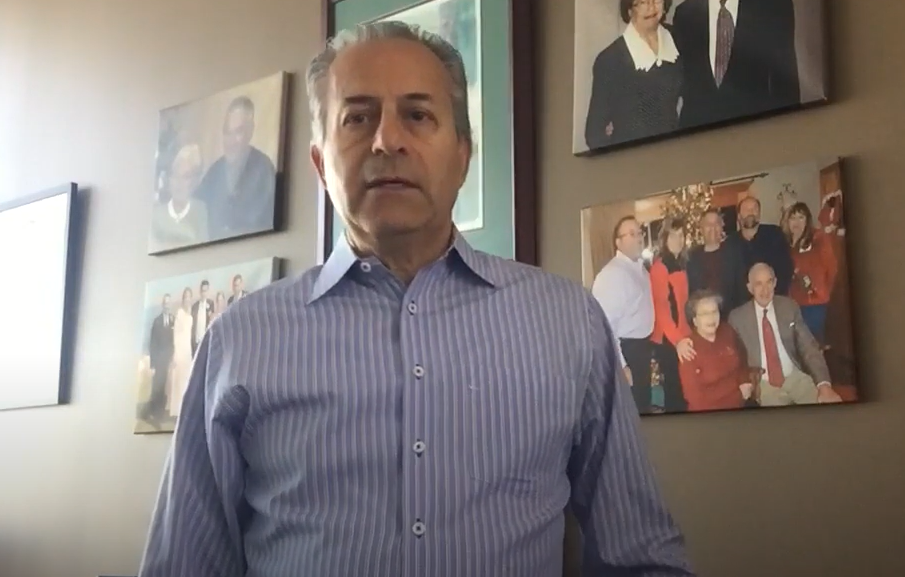5 min read
3 min read
Passive vs. Active Investment Strategies: Choosing The Right Mix of Activities
 Stephen Ahern
:
Jun 24, 2024
Stephen Ahern
:
Jun 24, 2024
| Considering passive and active investment strategies is part of building a portfolio you feel comfortable with. The former strategy attempts to capitalize on lucrative short-term opportunities, while the latter uses a more hands-off approach to hold onto a more stable portfolio. While your investment management advisors are the best source of specific guidance about the best investment strategies for you, here’s a brief overview of these two options. |
What is Passive Investing?
Passive investing involves holding onto stock or other assets for the long term. This strategy might be favored by investors who are more cautious about risk avoidance (though, like most investment strategies, risk is still involved).
When discussing passive investing, we generally discuss investing in funds designed to mirror a stock index in a relatively efficient market, such as the S&P 500 or the Russell 1000. Here’s a basic example of what passive investing can look like. Let’s say you’re especially interested in investing in tech companies, many of which are included in the Nasdaq Exchange. So, you look for an index fund that tracks the Nasdaq Composite. These funds include the same securities that are included in the Nasdaq index. When new stocks are added and other stocks are delisted from the Nasdaq, the index fund is adjusted too. Because the fund’s composition mirrors the Nasdaq index’s composition, the fund’s returns should be comparable to the performance of the Nasdaq index itself.
Passive investing can also describe your personal approach to maintaining your portfolio. If you buy stocks and other securities intending to hold onto them for the long term despite market fluctuations that affect their value, that’s also considered passive investing.
What is Active Investing?
Compared to a passive strategy, active investing tends to be favored by people willing to accept tradeoffs and increased risk for the chance of more significant returns. These investors may elect to put their money into actively managed funds; unlike a passive fund, which essentially copies an existing index, individuals (or teams) curate an actively managed fund. The fund managers constantly research and track the stock market and add or remove stocks from the fund based on their analysis. They try to beat the market and choose stocks that could yield higher returns than you’d get from an index fund.
Because the goal is to chase more significant returns on undervalued stocks, the composition of an actively managed fund tends to change frequently. The fund manager will sell off parts of the portfolio and buy new stocks whenever their analysis indicates a good opportunity to profit. This may result in higher taxable capital gains.
Like passive investing, active investing isn’t limited to investing in a pre-existing fund. Some investors are skilled at analyzing the market and enjoy managing their own active portfolios. Buying and quickly selling investment real estate is also an example of active investing.
Comparing Active vs. Passive Investment Strategies
Sound investment strategies are tailored to individual investors. Your investment philosophies, risk tolerance, and overall financial goals are unique to you and should shape how you and your investment advisors build your portfolio. Both passive investing and active investing strategies could be part of that portfolio.
As you think about how heavily you want to invest in one strategy or the other, some things to consider include:
Cost: Active investing includes a higher level of service, so it comes with a higher price than passive investing. Management fees for actively managed funds can be 1% or higher. Passive index funds have much smaller fees because they require much less oversight. Even outside organized funds, active investing tends to have a higher cost than passive investing. Suppose you buy and sell a new investment property every six months. In that case, you’ll spend more time, effort, and money on those transactions than someone who has held onto an investment property for years.
Human fallibility: When you invest in an actively managed fund, there’s always a chance that the individual or team making those portfolio decisions will make a bad call that costs the fund money. That’s just one of the risks that’s inherent in active investing.
Tax implications: Capital gains taxes must be considered when adjusting your portfolio. Passive investing is the more tax-efficient option of these two investment strategies. Passive investors may pay minimal or zero long-term capital gains taxes on their investments in a given tax year. Active investments involve such frequent sales that investors can expect to be taxed on short-term capital gains every year.
Need Help Choosing Investment Strategies?
Sachetta’s investment management team will work with you to create a strategy that suits your financial goals and feels comfortable and easy to understand. Bring us your big and small questions so we can help you make the most informed decisions about investment strategies. We’re always happy to explain concepts like active vs. passive investing or demystify anything else that seems confusing about your options for growing your wealth. Contact us today!
 Before joining Sachetta, Stephen Ahern co-founded and served as President of Wealth Management Advisors, LLC. For over thirty-five years, Stephen has provided individual financial, investment, estate, and tax planning and small business consulting to a diverse base of clients. His clients have included key top-level executives, high-net-worth individuals, business owners, venture capitalists, and entrepreneurs. As an established personal financial planner, Stephen has delivered numerous presentations on financial, investment, retirement, and tax planning to corporations and professional groups. He has also written articles on investment, education, and estate planning.
Before joining Sachetta, Stephen Ahern co-founded and served as President of Wealth Management Advisors, LLC. For over thirty-five years, Stephen has provided individual financial, investment, estate, and tax planning and small business consulting to a diverse base of clients. His clients have included key top-level executives, high-net-worth individuals, business owners, venture capitalists, and entrepreneurs. As an established personal financial planner, Stephen has delivered numerous presentations on financial, investment, retirement, and tax planning to corporations and professional groups. He has also written articles on investment, education, and estate planning.


